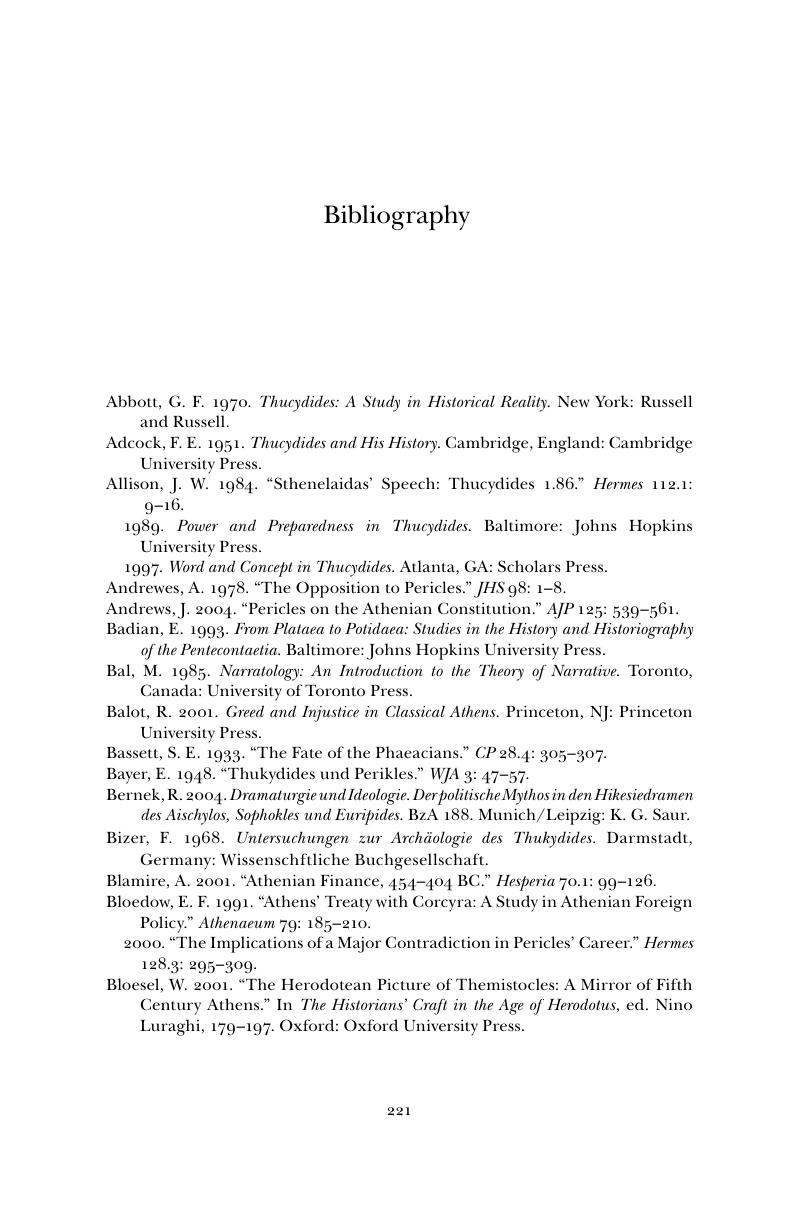Book contents
- Frontmatter
- Contents
- Acknowledgments
- List of Abbreviations
- Introduction
- 1 War Materials and Their Glory in the Archaeology
- 2 Arms and Passion
- 3 The Athenian Acme in Book One of Thucydides
- 4 Pericles in History
- 5 Pericles and Athens
- 6 Thucydides and Pericles' Final Speeches
- Bibliography
- General Index
- Index Locorum
- References
Bibliography
Published online by Cambridge University Press: 06 July 2010
- Frontmatter
- Contents
- Acknowledgments
- List of Abbreviations
- Introduction
- 1 War Materials and Their Glory in the Archaeology
- 2 Arms and Passion
- 3 The Athenian Acme in Book One of Thucydides
- 4 Pericles in History
- 5 Pericles and Athens
- 6 Thucydides and Pericles' Final Speeches
- Bibliography
- General Index
- Index Locorum
- References
Summary

- Type
- Chapter
- Information
- Thucydides, Pericles, and Periclean Imperialism , pp. 221 - 230Publisher: Cambridge University PressPrint publication year: 2010

